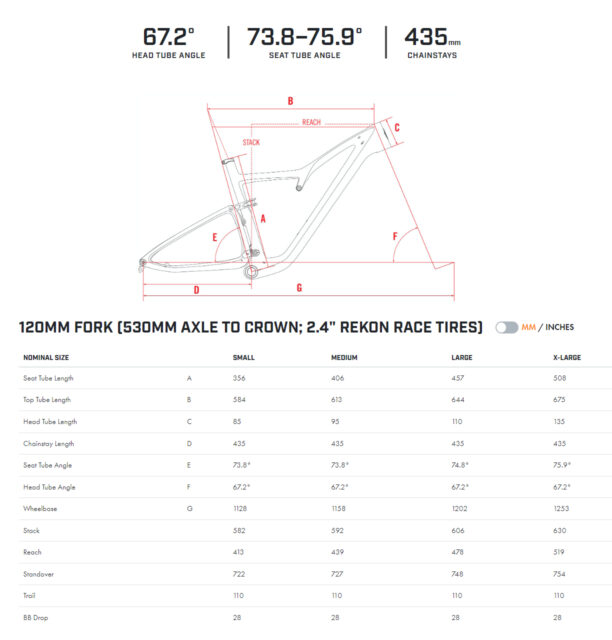Ibis Exie
Wheel Size: 29’’
Travel: 100 mm rear / 120 mm front
Geometry highlights:
- Sizes offered: S, M, L, XL
- Headtube angle: 67.2°
- Seat tube angle: ~75° (varies by size, see below)
- Reach: 478 mm (size Large)
- Chainstay length: 435 mm
Frame material: Carbon Fiber
Price: Complete bikes: $4,999 to $5,499
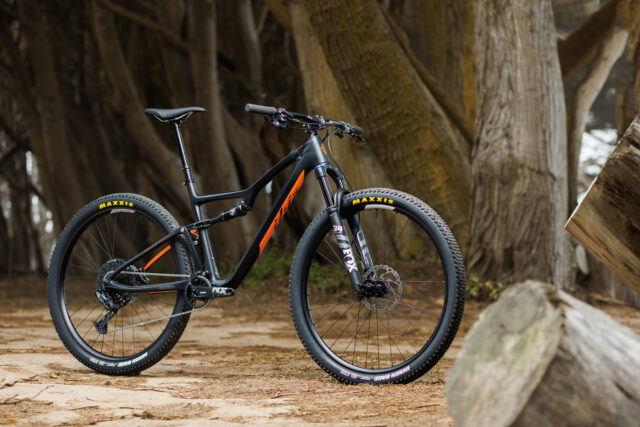
Intro
The original Exie was an interesting new offering for Ibis when they launched it back in 2021 — a US-made XC race bike with what was, at the time, notably progressive geometry for the class. Ibis spun up a whole new factory near their hometown of Santa Cruz, CA to build the original Exie, launched in time to celebrate the company’s 40th anniversary.
Ibis isn’t dropping the US-made Exie — it stays in the lineup for the higher-end builds and the frame-only option — but now there’s a more affordable Asian-made one, offered in a handful of less expensive builds.
The Frame
Unsurprisingly, as a modern XC race bike, the Exie is a dedicated 29er, with no provisions for running any alternate wheel sizes. The Exie gets 100 mm of rear wheel travel from its DW-link suspension layout, meant to be paired with a 120mm-travel fork. The positioning of the rear shock underneath the top tube leaves room for two water bottles inside the front triangle across the whole size range, and despite the Exie’s goal of being a lightweight XC race bike, you get fully-guided internal cable routing, a threaded bottom bracket shell, a small integrated upper chainguide, and so on. The derailleur hanger is a SRAM UDH, and the brake mount takes a 160 mm rotor directly; adapting it up to a 180 mm one is allowed.
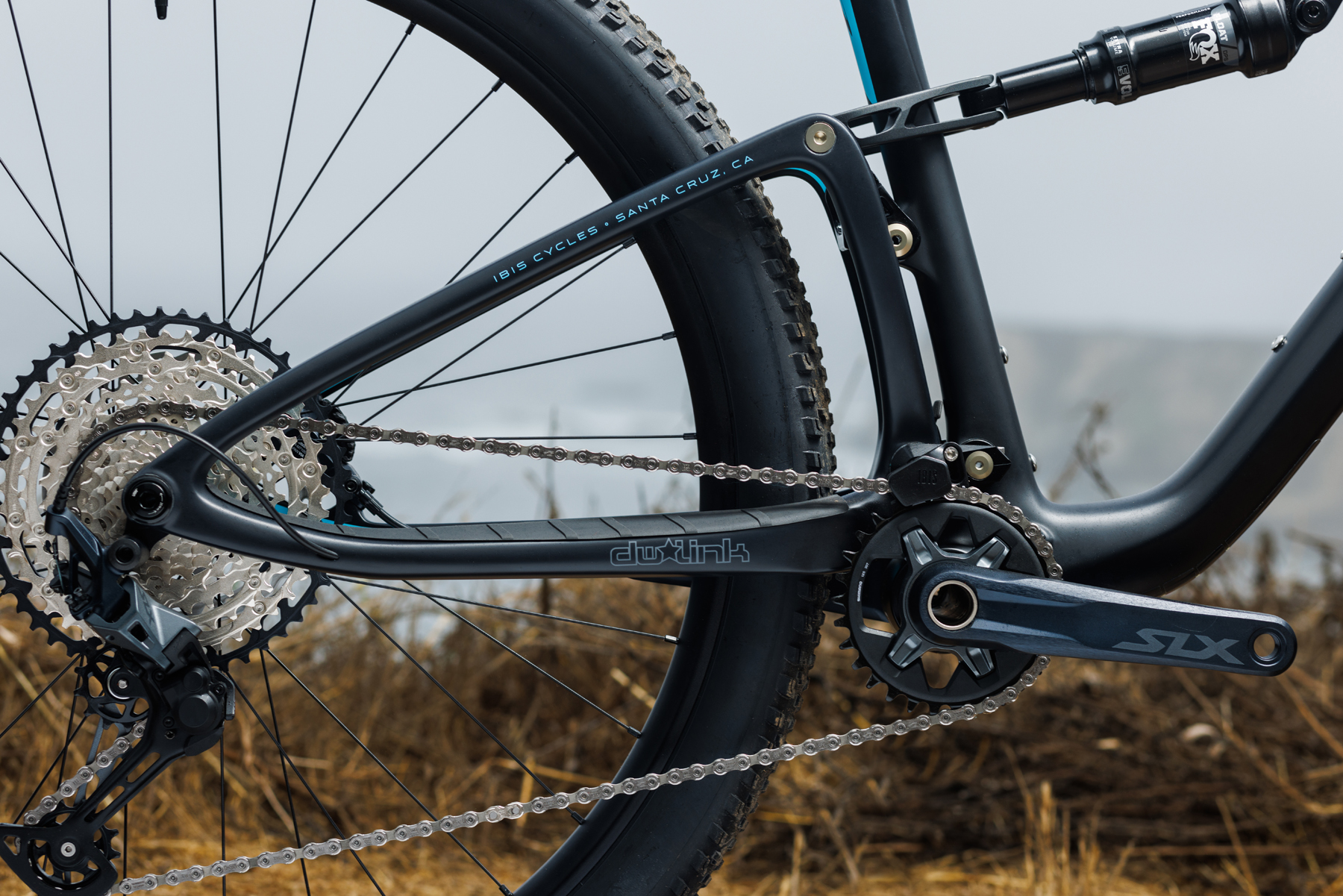
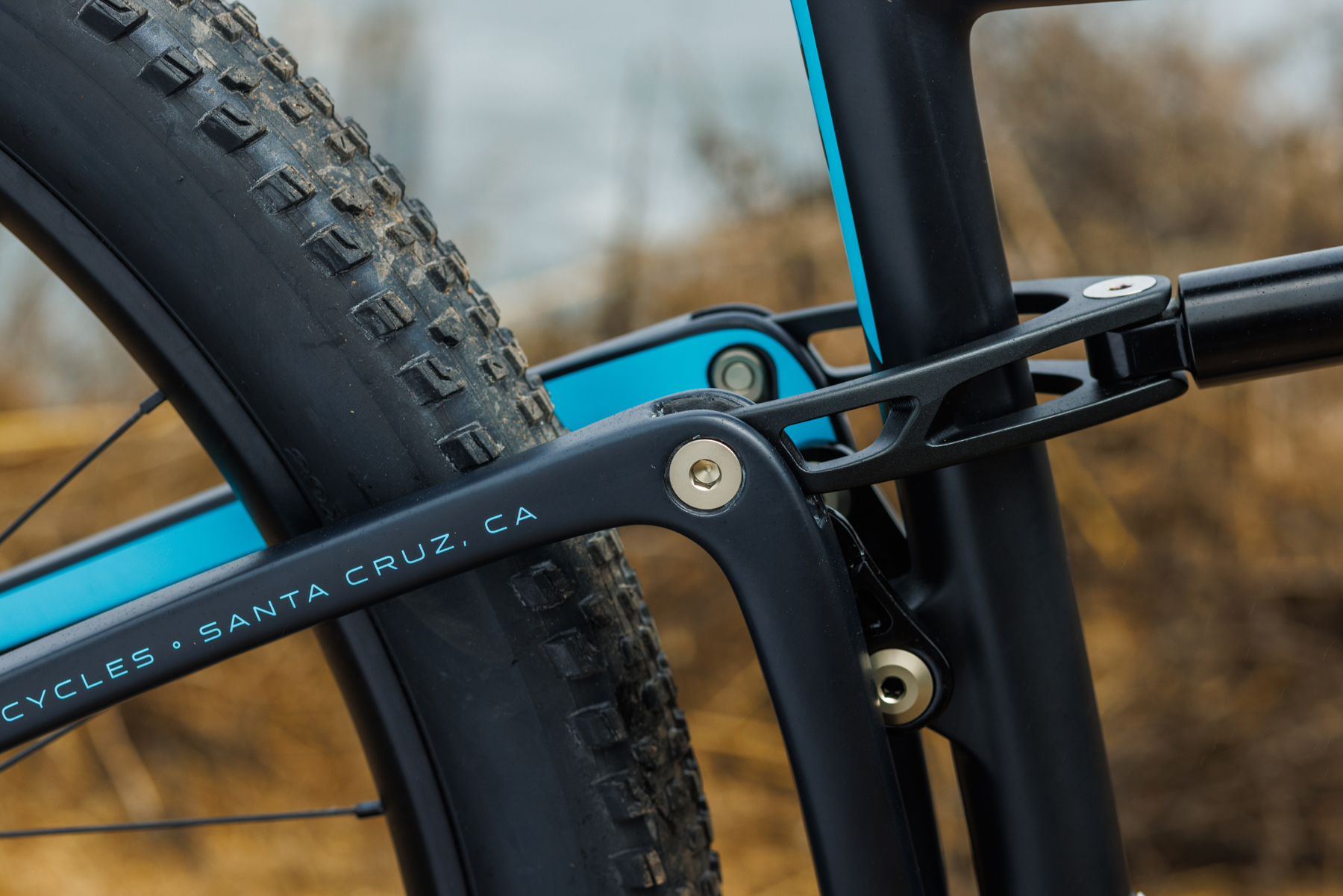

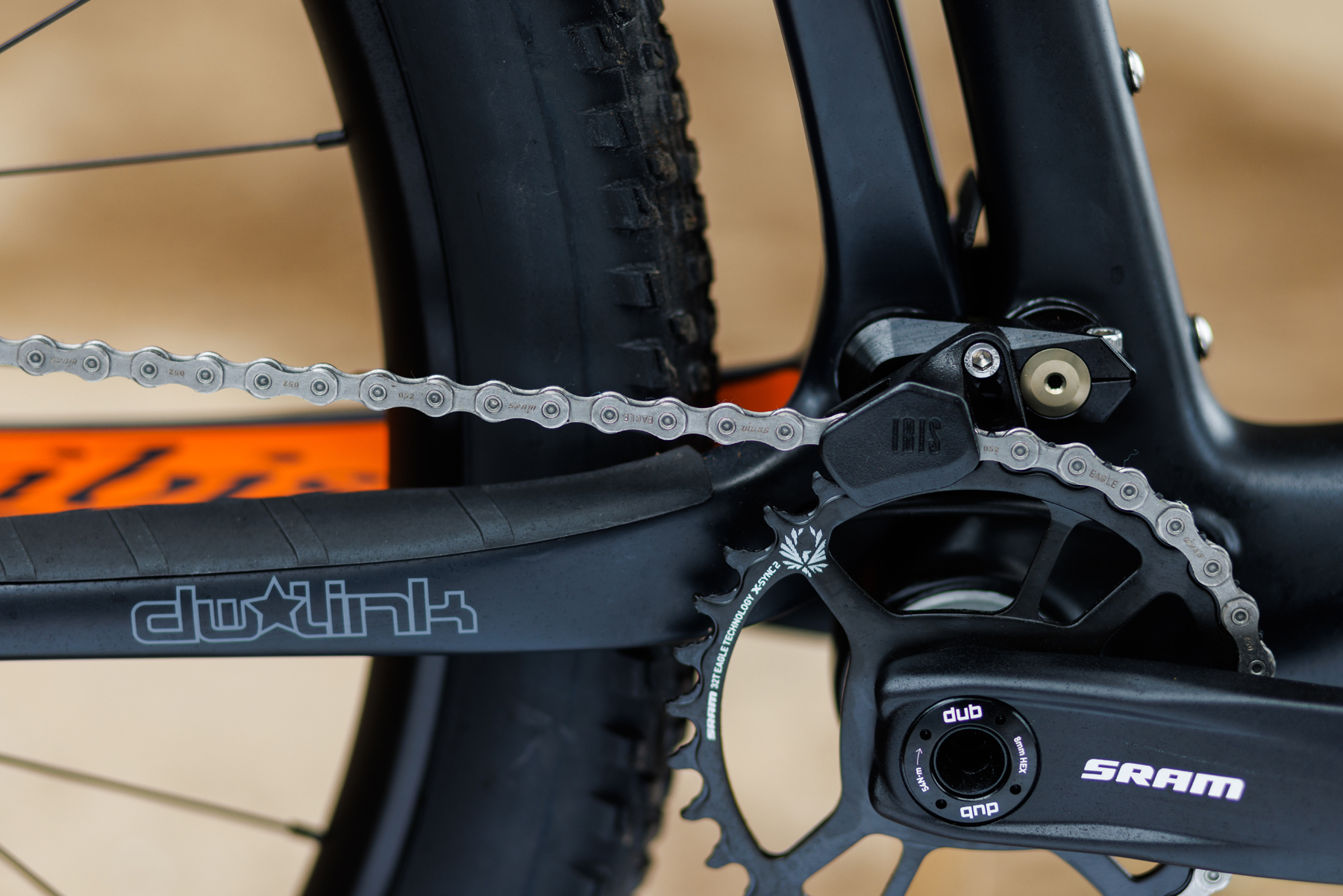
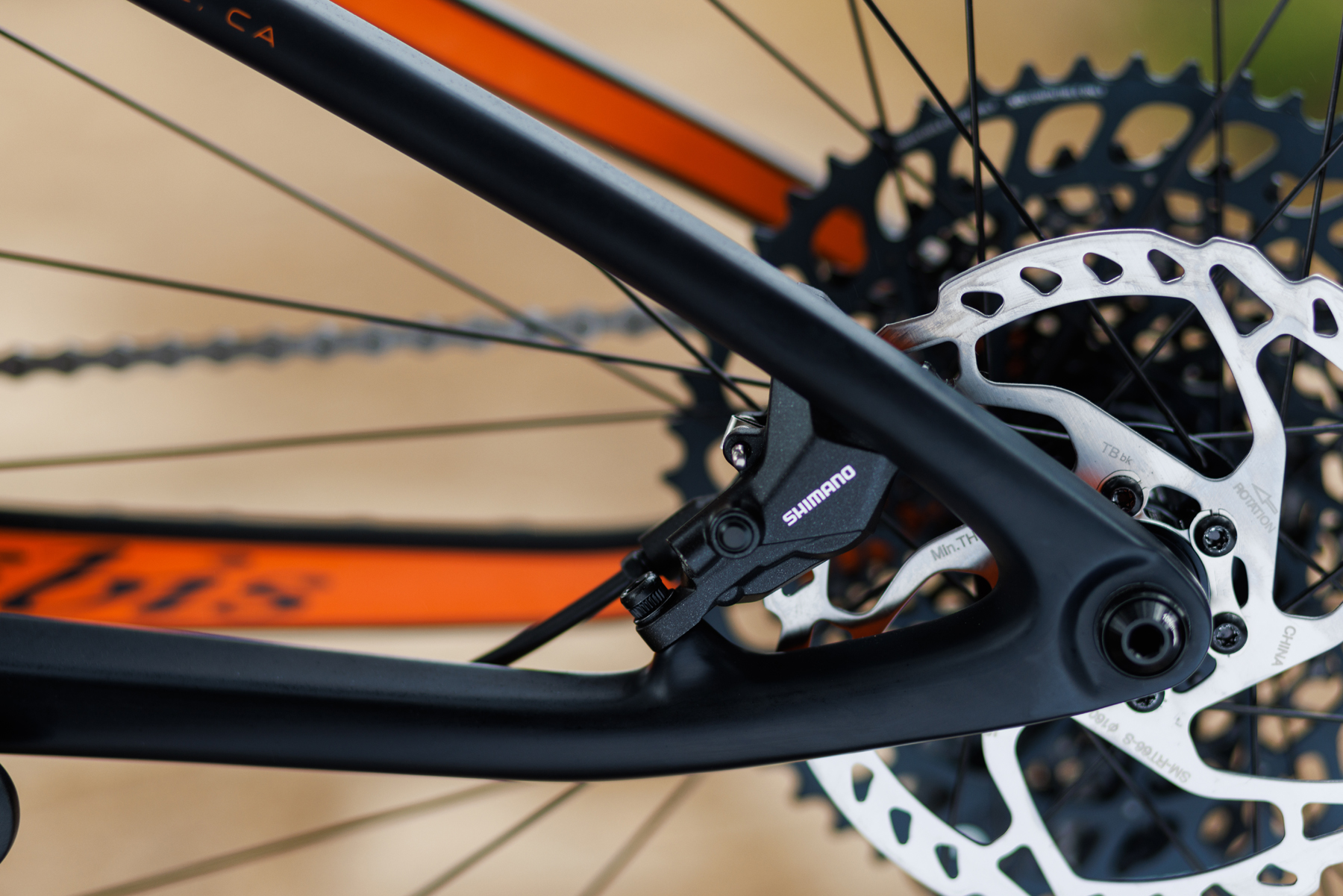
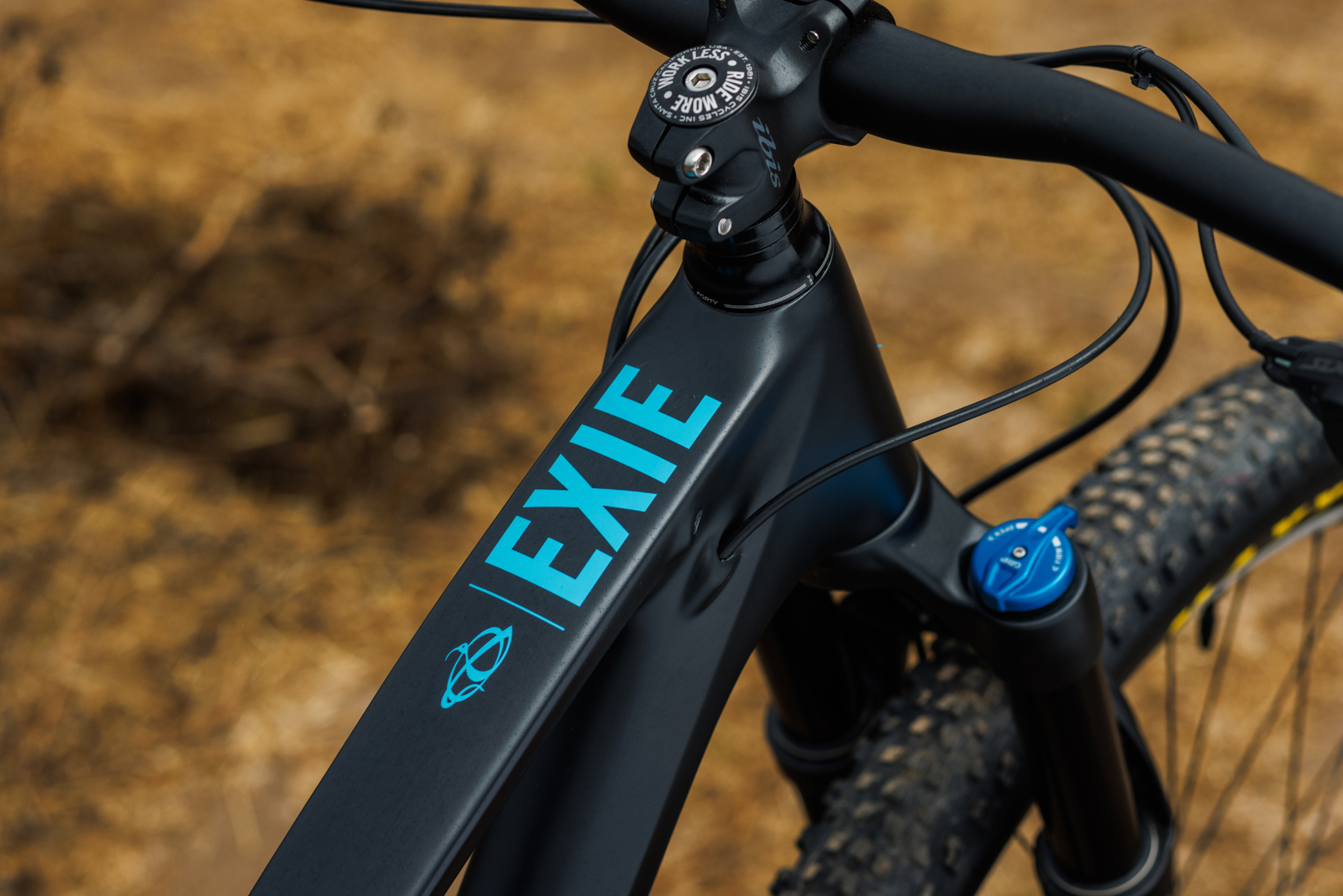
One of the goals of the original Exie was to keep the frame weight under 2 kg (4.4 lb) for a size Medium, including the shock. The stated weight wound up over that by just a few grams, at 2,026 g — which is to say, still very, very light. The new Asian-made version is apparently about 250 g heavier for the frame.
Apart from the modest weight gain, though, the new Asian-made Exie is the same as the original US-made version. No matter where your Exie is made, Ibis offers a 7 year warranty on the frame for the original buyer; the frame is finished in bare carbon fiber, with your choice of blue or orange accents; and the suspension, features, and geometry are the same for both frame versions. And speaking of that geometry:
Fit & Geometry
Ibis offers the Exie in four sizes, Small through XL, with a 67.2° headtube angle across the board. Seat tube angles start at 73.8° for the Small and Medium, then gain about a degree per size for the Large and XL, and reach ranges from 413 mm through 519 mm (with the Medium comin it at 439 mm and the Large at 478 mm). All four sizes get 435 mm chainstays and 28 mm of bottom bracket drop.
The Builds
Ibis offers three builds on the new Asian-made Exie, which mostly differ in terms of their drivetrains. The Deore and NGX options both retail for $4,999 — just $500 more than the US-made Exie frame — and come with Fox Performance suspension, a KS dropper post, and two-piston Shimano Deore brakes. For an extra $500, the SLX build gets you an upgrade to a Bike Yoke Revive dropper post, in addition to the higher-end drivetrain and brakes, but shares the same suspension and Ibis-branded aluminum wheels.
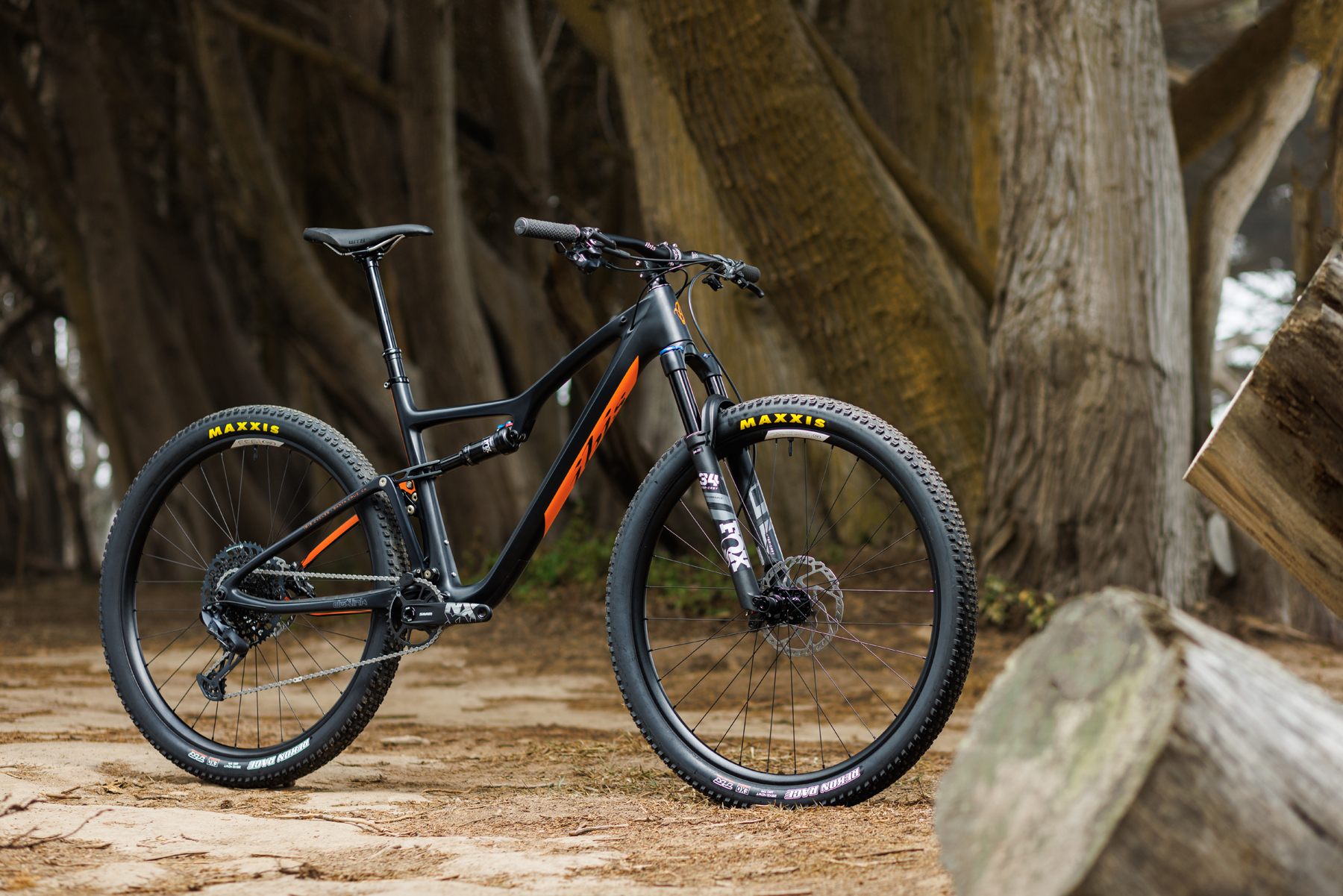
- Drivetrain: Shimano Deore
- Brakes: Shimano Deore 2-piston w/ 180 mm front / 160 mm rear rotors
- Fork: Fox 34 Step Cast Performance
- Shock: Fox Float DPS Performance
- Wheels: Ibis 933
- Dropper Post: KS Rage-i
- Drivetrain: SRAM NX / GX
- Brakes: Shimano Deore 2-piston w/ 180 mm front / 160 mm rear rotors
- Fork: Fox 34 Step Cast Performance
- Shock: Fox Float DPS Performance
- Wheels: Ibis 933
- Dropper Post: KS Rage-i
- Drivetrain: Shimano SLX
- Brakes: Shimano SLX 2-piston w/ 180 mm front / 160 mm rear rotors
- Fork: Fox 34 Step Cast Performance
- Shock: Fox Float DPS Performance
- Wheels: Ibis 933
- Dropper Post: Bike Yoke Revive
- Drivetrain: Shimano XT
- Brakes: Shimano XT 2-piston w/ 180 mm front / 160 mm rear rotors
- Fork: Fox 34 Step Cast Factory Remote
- Shock: Fox Float DPS Factory Remote
- Wheels: Ibis 933
- Dropper Post: Bike Yoke Revive
- Drivetrain: SRAM X01
- Brakes: Shimano XT 2-piston w/ 180 mm front / 160 mm rear rotors
- Fork: Fox 34 Step Cast Factory Remote
- Shock: Fox Float DPS Factory Remote
- Wheels: Ibis 933
- Dropper Post: Bike Yoke Revive
- Drivetrain: SRAM XX1 AXS
- Brakes: Shimano XTR 2-piston w/ 180 mm front / 160 mm rear rotors
- Fork: Fox 34 Step Cast Factory Remote
- Shock: Fox Float DPS Factory Remote
- Wheels: Ibis S28 Carbon rims w/ Industry Nine Hydra hubs
- Dropper Post: RockShox Reverb AXS
In addition to the differences in frame origin and build specs, it’s worth noting that the US-made Exie builds get remote lockouts for the Fox suspension, while the less-expensive Asian-built bikes forgo the remotes. All the builds come with 2.4’’ Maxxis Rekon Race tires at both ends.
Some Questions / Things We’re Curious About
(1) Ibis describes the Exie as being a World Cup-ready XC race bike first and foremost, but could it be a viable big-day Trail bike for folks who want to cover a lot of ground quickly, too?
(2) And how does the Exie stack up against a lot of the more progressive XC bikes on the market, such as the Scott Spark RC, Specialized Epic Evo, and so on?
Bottom Line (For Now)
The Ibis Exie has been around for a couple years now, but the new overseas-made version of the frame is a whole lot more affordable than the original US-built version, and that addition to the model line is going to make the Exie accessible for a lot more folks. We’re hoping to get an Exie in for review once the high country starts melting out in the spring, so stay tuned for a full review to come.

